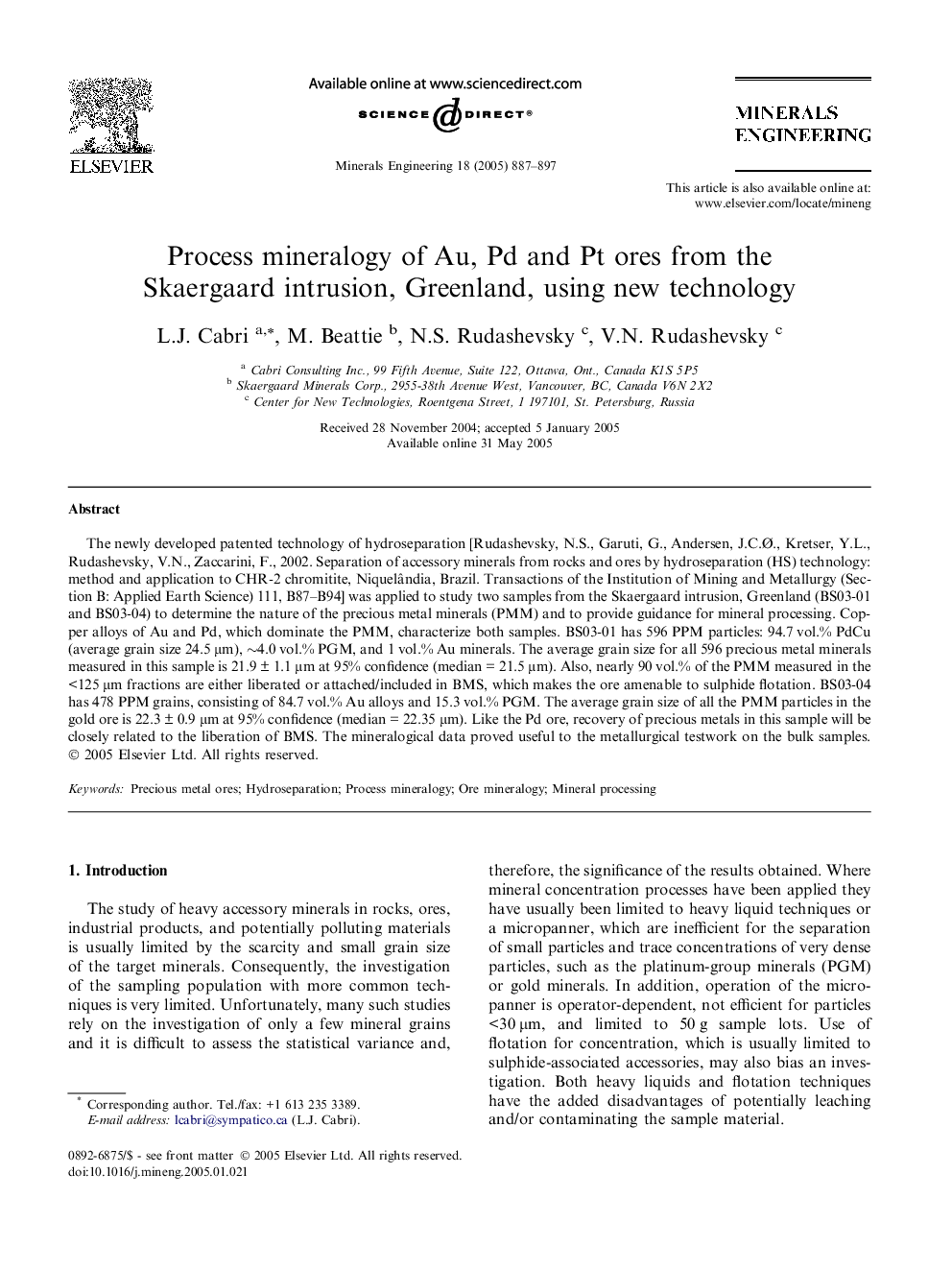| Article ID | Journal | Published Year | Pages | File Type |
|---|---|---|---|---|
| 10280046 | Minerals Engineering | 2005 | 11 Pages |
Abstract
The newly developed patented technology of hydroseparation [Rudashevsky, N.S., Garuti, G., Andersen, J.C.Ã., Kretser, Y.L., Rudashevsky, V.N., Zaccarini, F., 2002. Separation of accessory minerals from rocks and ores by hydroseparation (HS) technology: method and application to CHR-2 chromitite, Niquelândia, Brazil. Transactions of the Institution of Mining and Metallurgy (Section B: Applied Earth Science) 111, B87-B94] was applied to study two samples from the Skaergaard intrusion, Greenland (BS03-01 and BS03-04) to determine the nature of the precious metal minerals (PMM) and to provide guidance for mineral processing. Copper alloys of Au and Pd, which dominate the PMM, characterize both samples. BS03-01 has 596 PPM particles: 94.7 vol.% PdCu (average grain size 24.5 μm), â¼4.0 vol.% PGM, and 1 vol.% Au minerals. The average grain size for all 596 precious metal minerals measured in this sample is 21.9 ± 1.1 μm at 95% confidence (median = 21.5 μm). Also, nearly 90 vol.% of the PMM measured in the <125 μm fractions are either liberated or attached/included in BMS, which makes the ore amenable to sulphide flotation. BS03-04 has 478 PPM grains, consisting of 84.7 vol.% Au alloys and 15.3 vol.% PGM. The average grain size of all the PMM particles in the gold ore is 22.3 ± 0.9 μm at 95% confidence (median = 22.35 μm). Like the Pd ore, recovery of precious metals in this sample will be closely related to the liberation of BMS. The mineralogical data proved useful to the metallurgical testwork on the bulk samples.
Related Topics
Physical Sciences and Engineering
Chemical Engineering
Chemical Engineering (General)
Authors
L.J. Cabri, M. Beattie, N.S. Rudashevsky, V.N. Rudashevsky,
